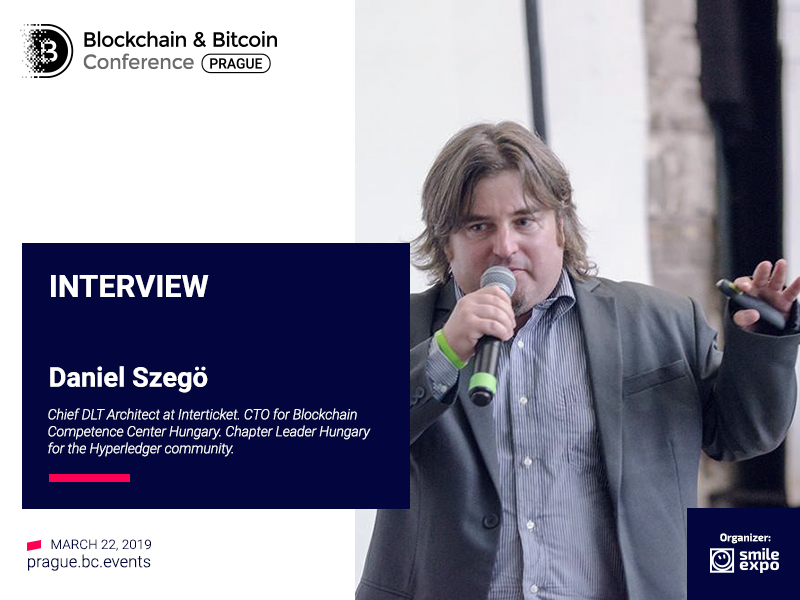
Consortium blockchain should not be implemented into the one company scenario with a central corporate authority, believes Daniel Szegö, Chief DLT Architect at Interticket.
In the interview to the Blockchain & Bitcoin Conference Prague, the expert talked about the advantages of consortium blockchains, compared different types of DLT and shared solutions of Blockchain Competence Center Hungary.
Interviewer: Blockchain & Bitcoin Conference Prague (BCP).
Speaker: Daniel Szegö, Chief DLT Architect at Interticket (DS).
BCP: Could you explain why consortium blockchain is a good choice for enterprises? What are the main benefits of the consortium blockchain?
DS: Consortium blockchains are the natural extension of business processes into a context with several companies.
In such consortium, several participating companies try to cooperate with each other in certain topics with sharing certain pieces of information. These companies usually do not fully trust each other: although they cooperate in certain fields, they might be competitors in others or they might keep certain information highly confident, like in a B2B supplier-consumer relationship. For supporting such use cases, consortium distributed ledgers are the only viable technological choice.
BCP: What disadvantage does the consortium blockchain have for enterprises?
DS: The basic idea of a consortium blockchain is multiparty company cooperation. If it is tried to be implemented into the one company scenario, where a central corporate authority has to be trusted, it is usually an overkill. In such cases, a centralized database system should be used instead.
BCP: Compare Azure Blockchain, Quorum, Hyperledger and Corda. How should enterprises evaluate these technologies to choose the best one for their work?
DS: There are different distributed ledger technologies. Corda and Quorum can be used in banking or financing, and Corda is not so much decentralized but pretty much high speed.
Azure Blockchain has the advantage that system integration for identity management, IoT, ERP are very strongly supported. Then, Hyperledger Fabric is good for any general consortium cases.
BCP: As a CTO for Blockchain Competence Center Hungary, can you tell us what solutions does the center develop and what results does it have so far?
DS: We usually make development projects for different customers as individual development. At the moment, we are working mostly with Ethereum, including Ethereum consortium templates as well and Hyperledger Fabric.
There are two products as well that are being developed: one in the direction of archiving information into the blockchain and a second one is a chain agonistic token model building framework.
BCP: Having been a Hashgraph Ambassador, why do you think hashgraph is a powerful alternative for blockchain?
DS: I used to be a Hashgraph Ambassador, however, I stepped down from the position last December.
This was free community activity from my side, and I do not do community activity for companies that do not share the values of open source development, open innovation, information and economic inclusion.
BCP: What will you talk about at the Blockchain & Bitcoin Conference Prague?
DS: I will give an in-depth introduction in major consortium and enterprise distributed ledger platforms including:
-
comparing platforms;
-
analysing advantages and disadvantages;
-
showing typical use cases.
Daniel Szegö will become a speaker at the Blockchain & Bitcoin Conference Prague where he will deliver a presentation “Overview of consortium and enterprise blockchain platforms.”
Learn more about the blockchain technology from the expert at the conference!



